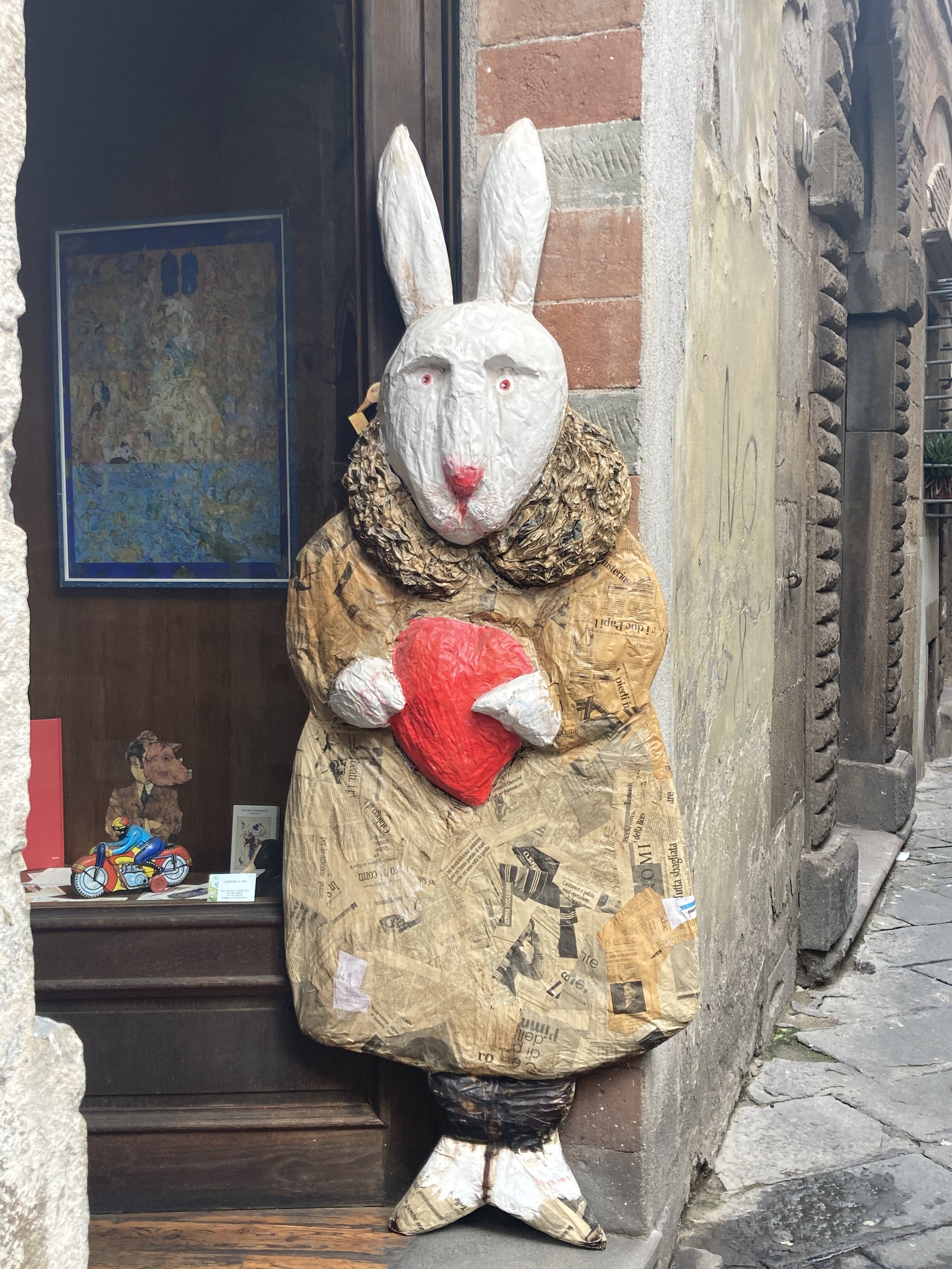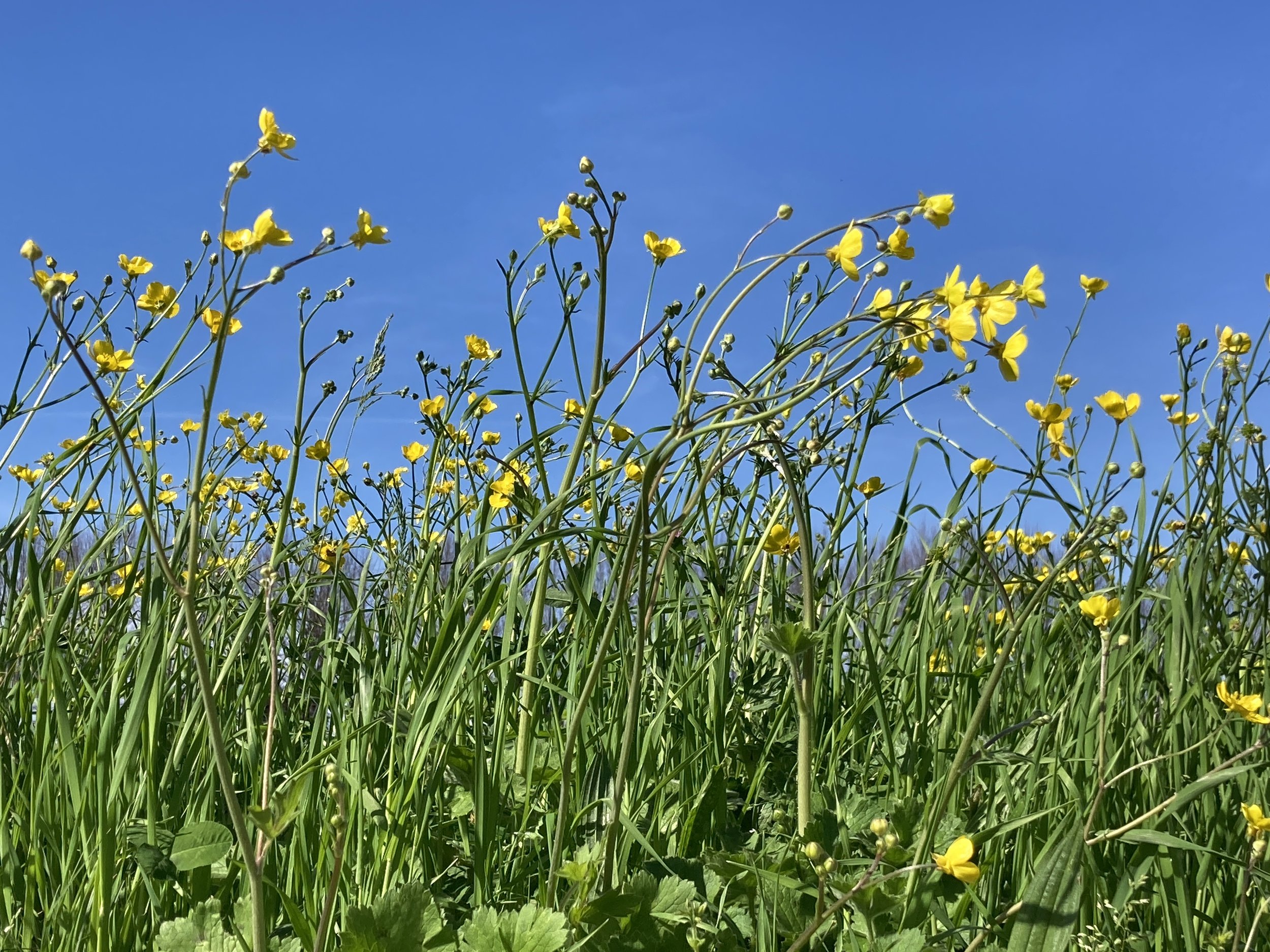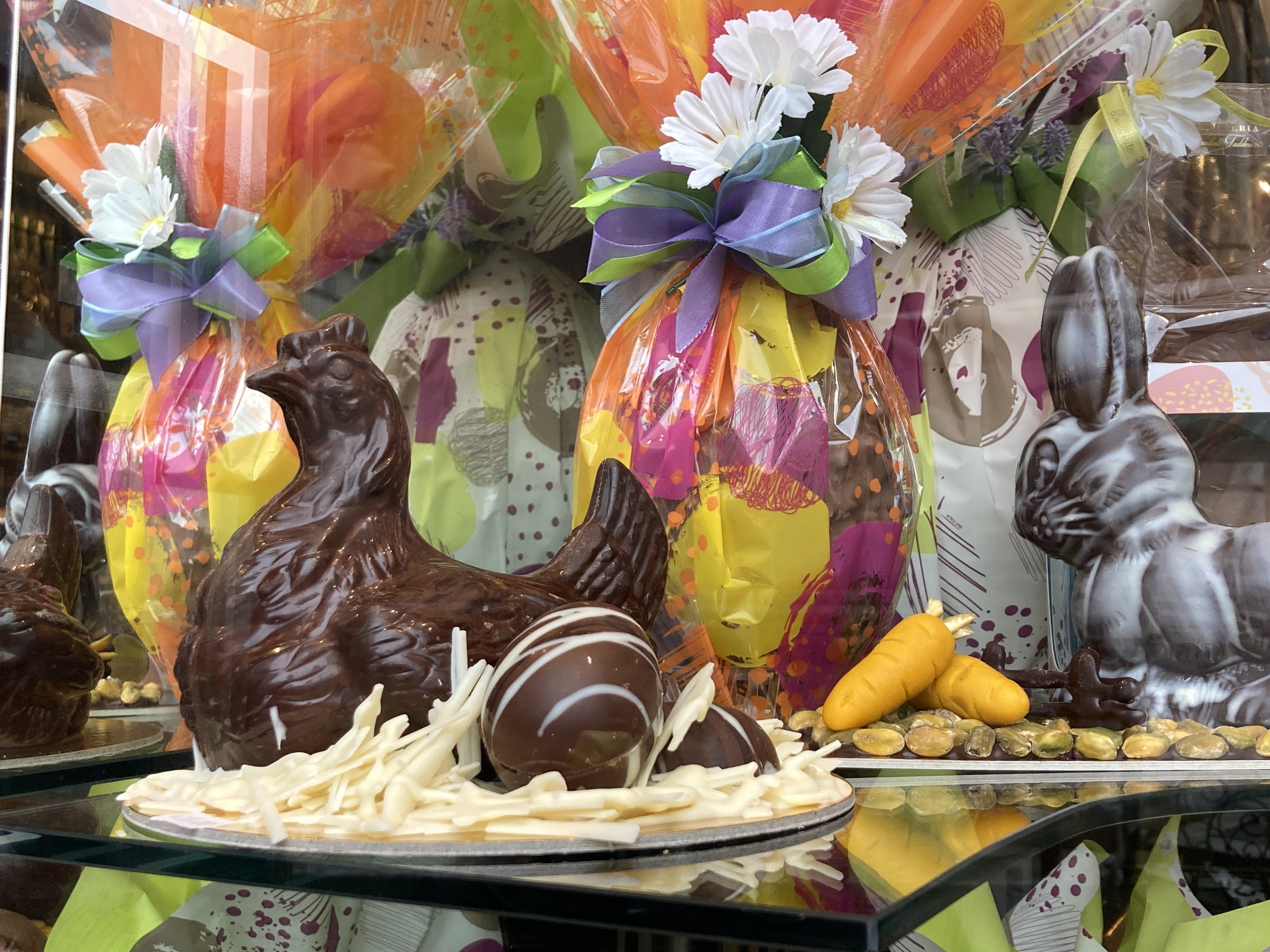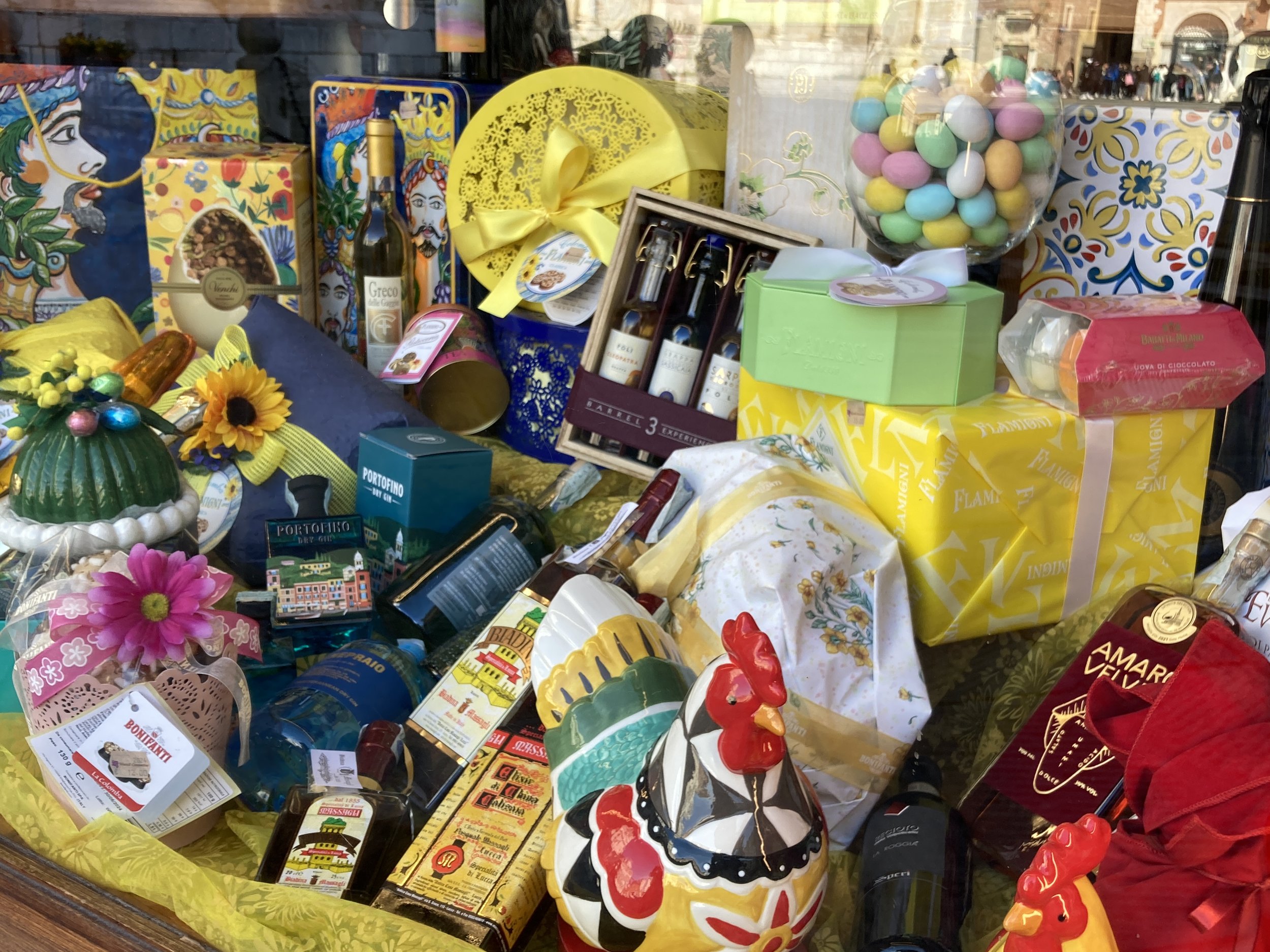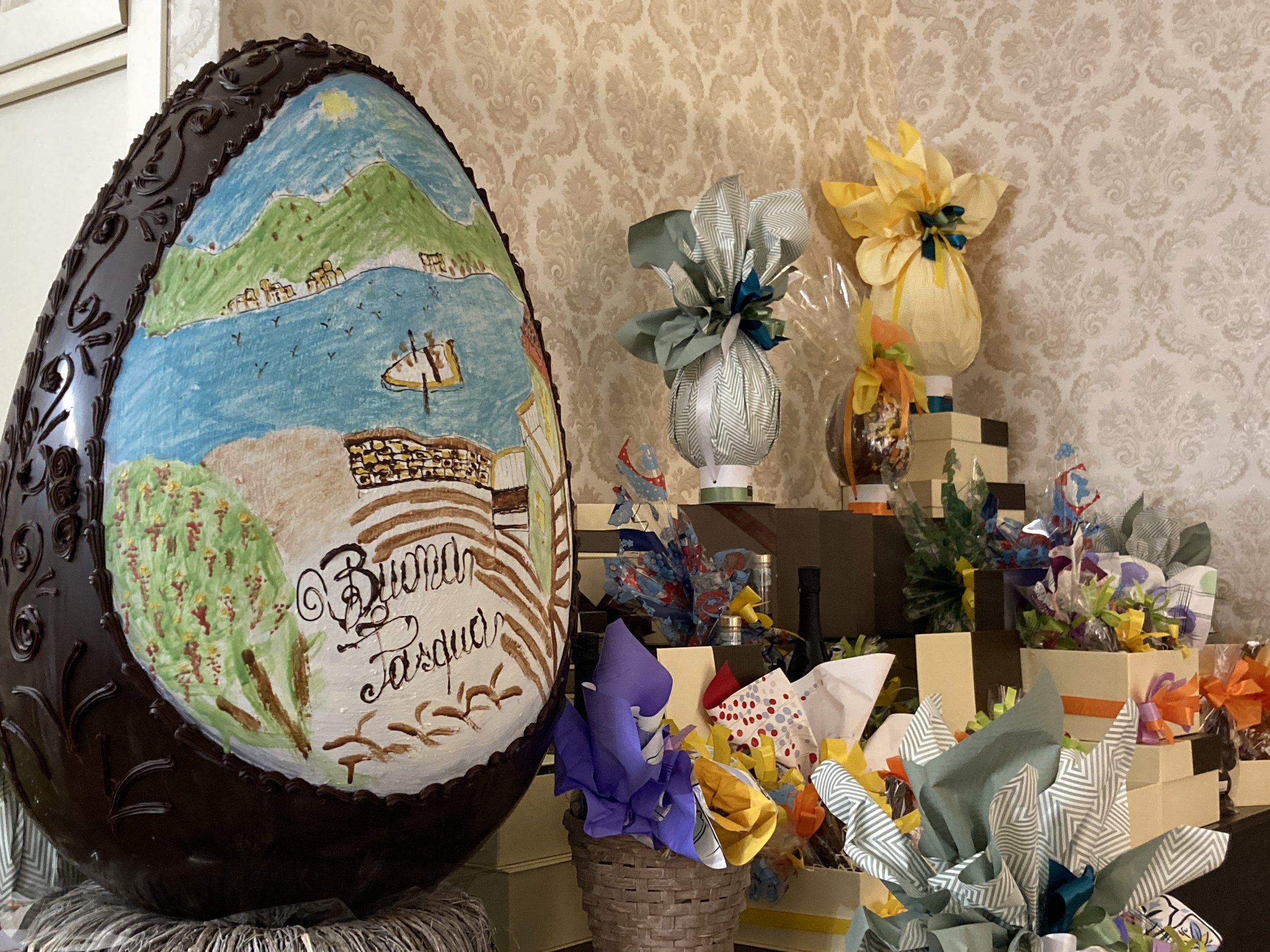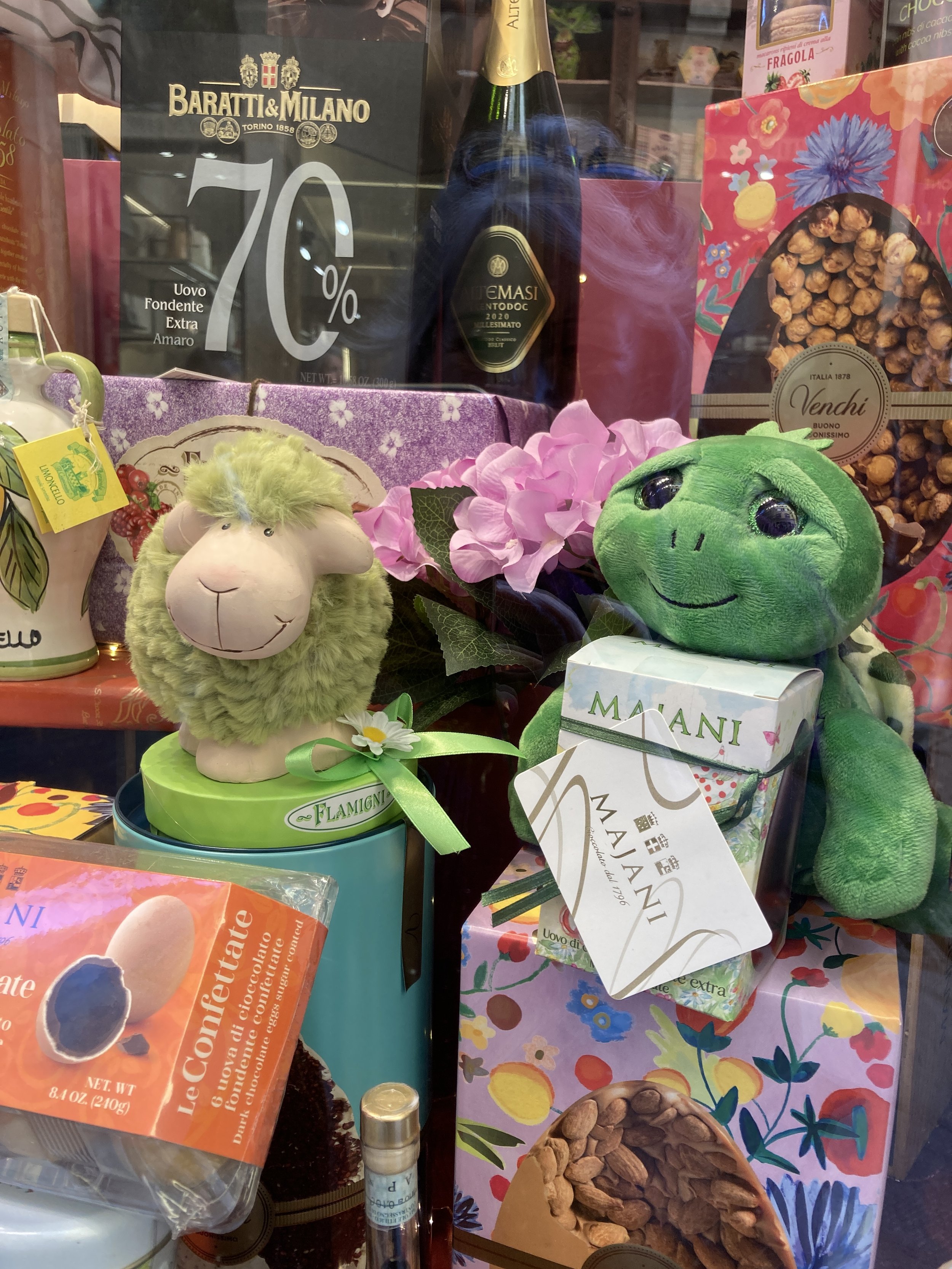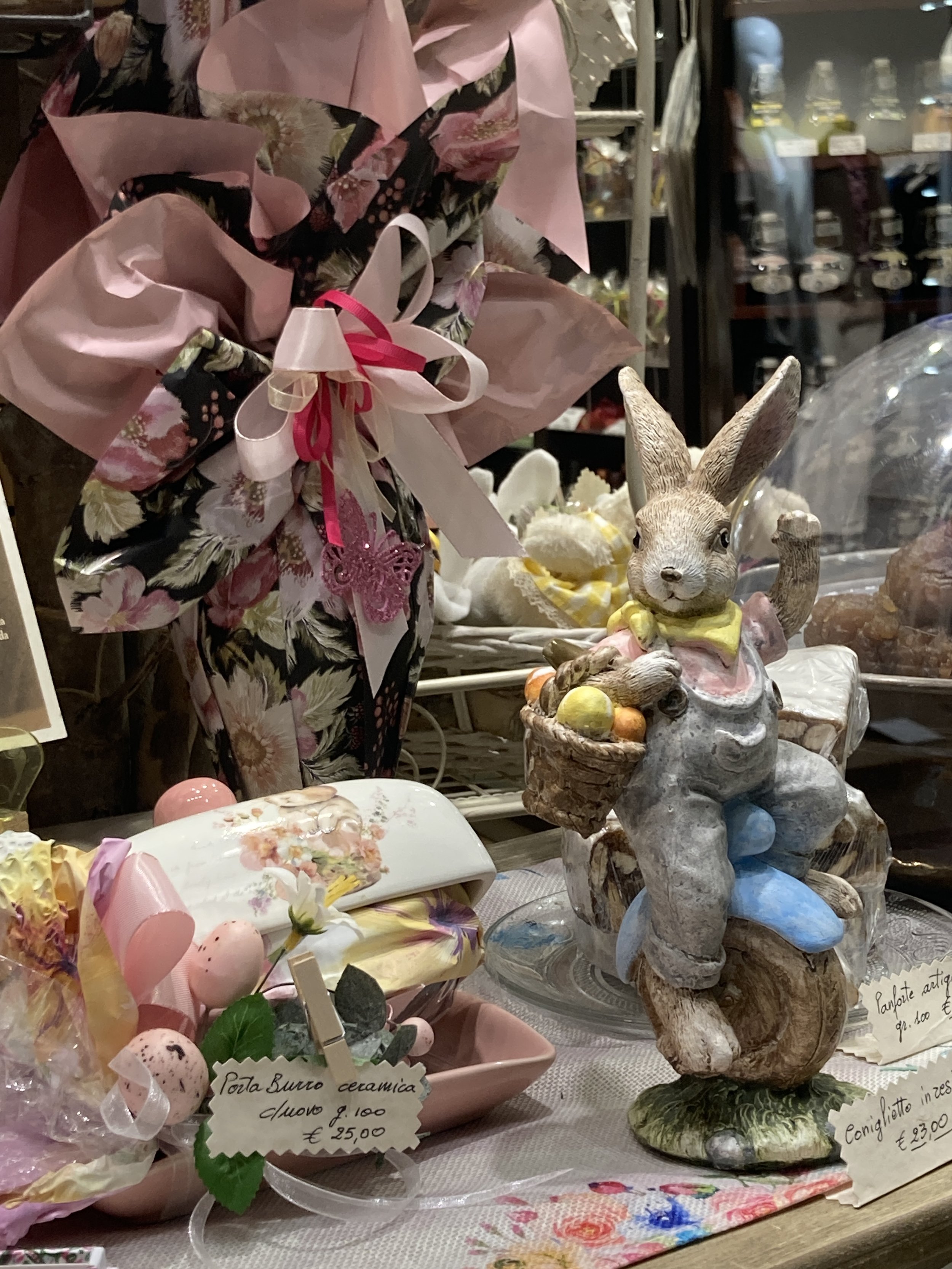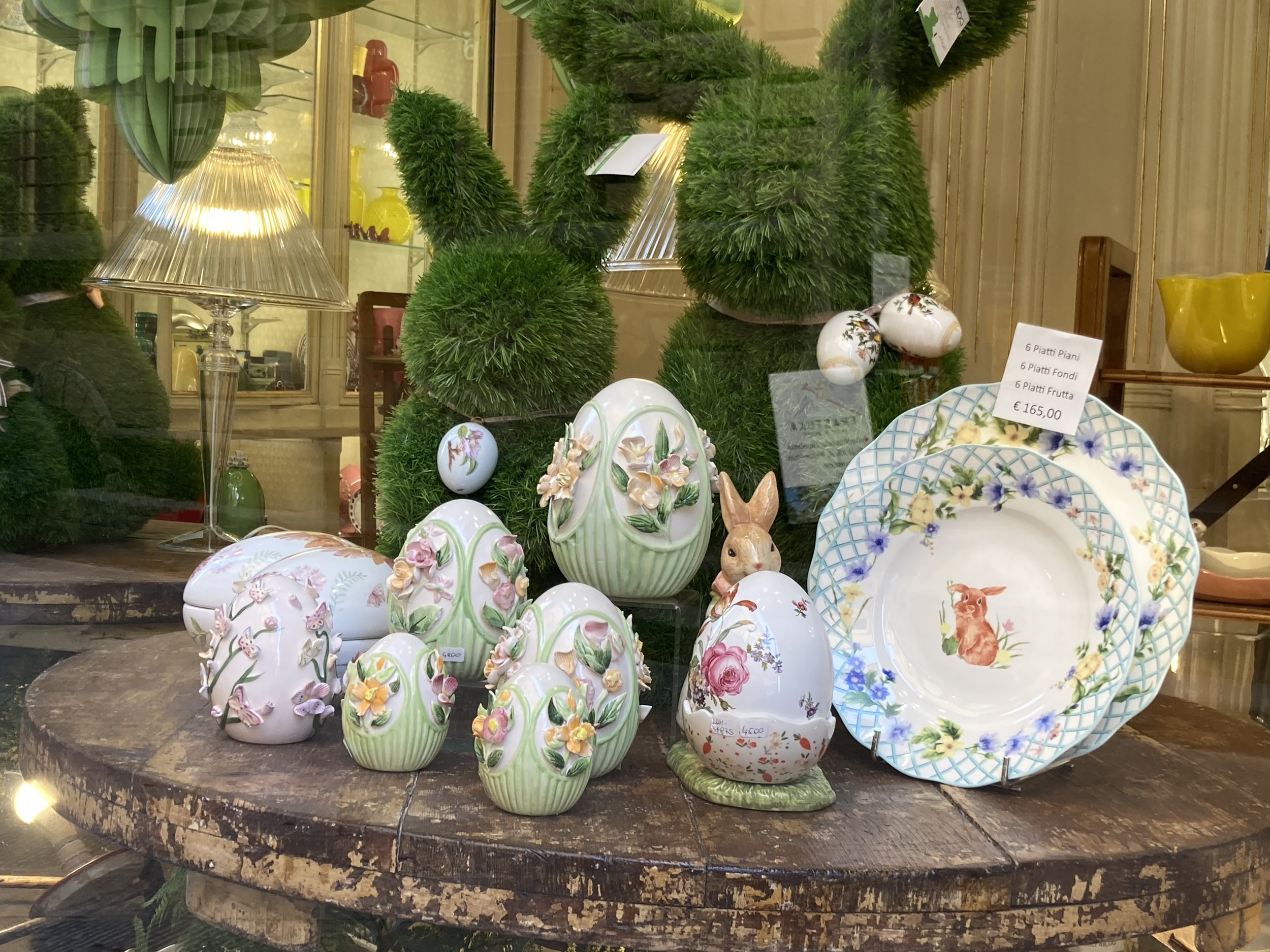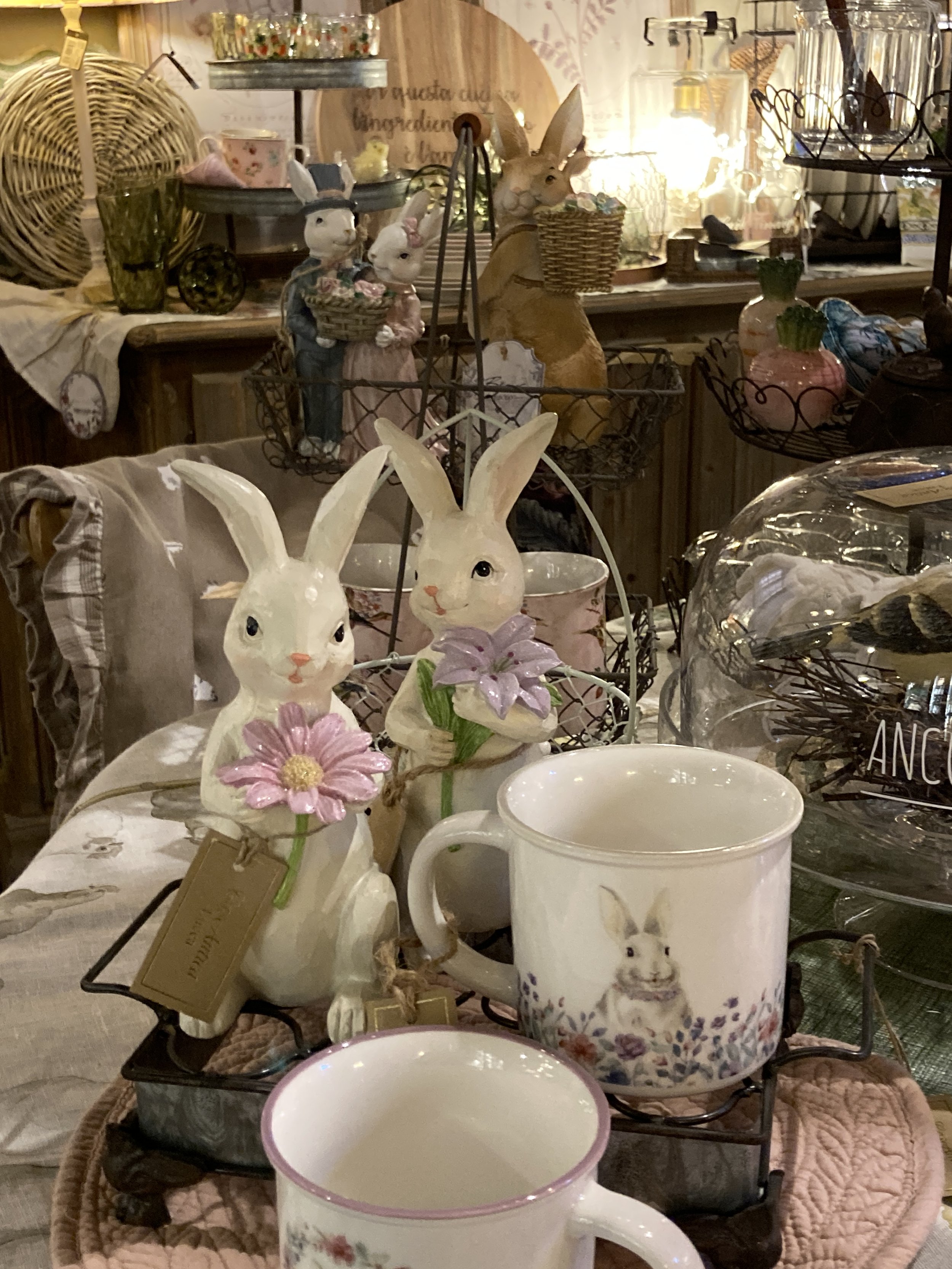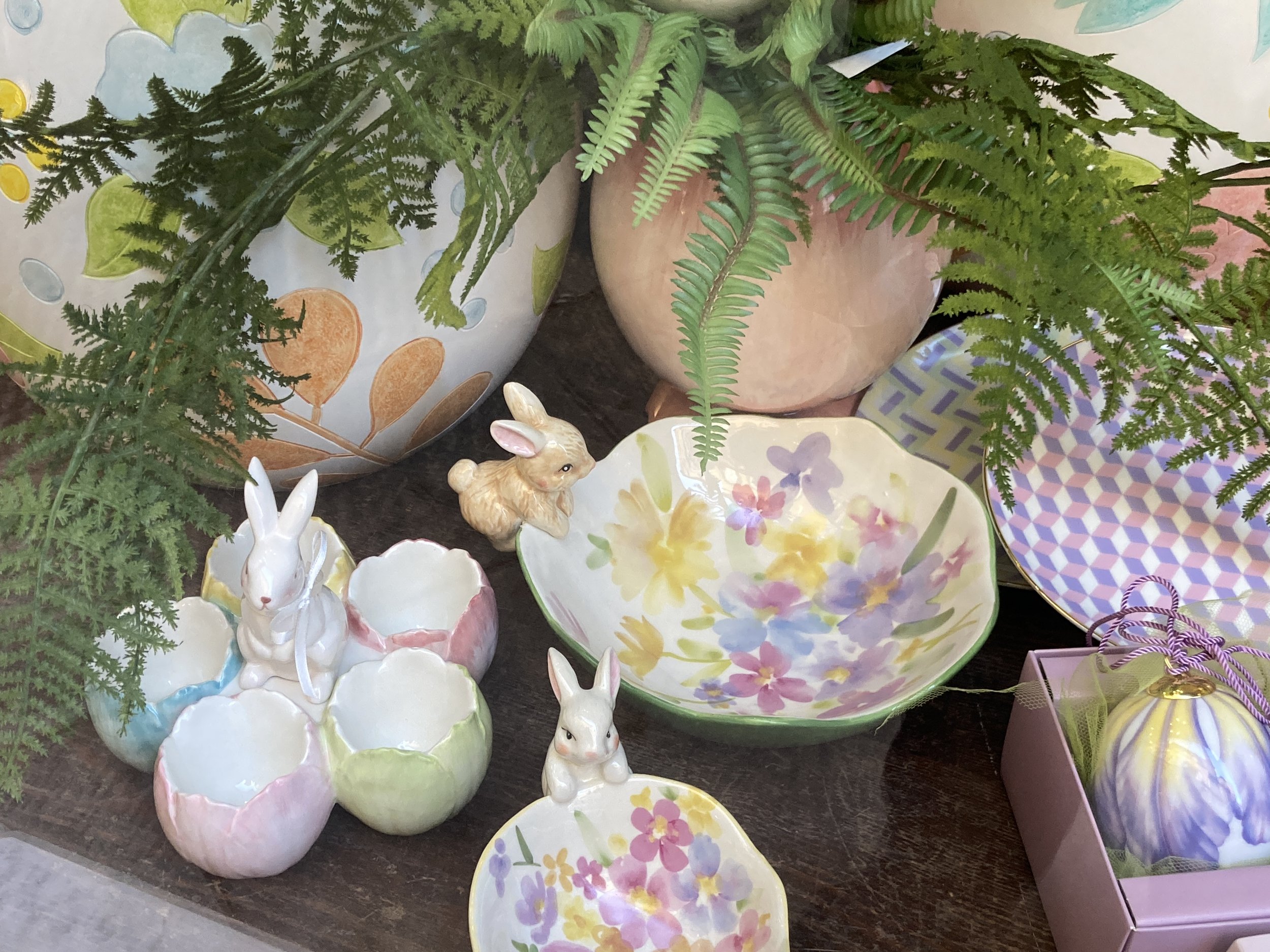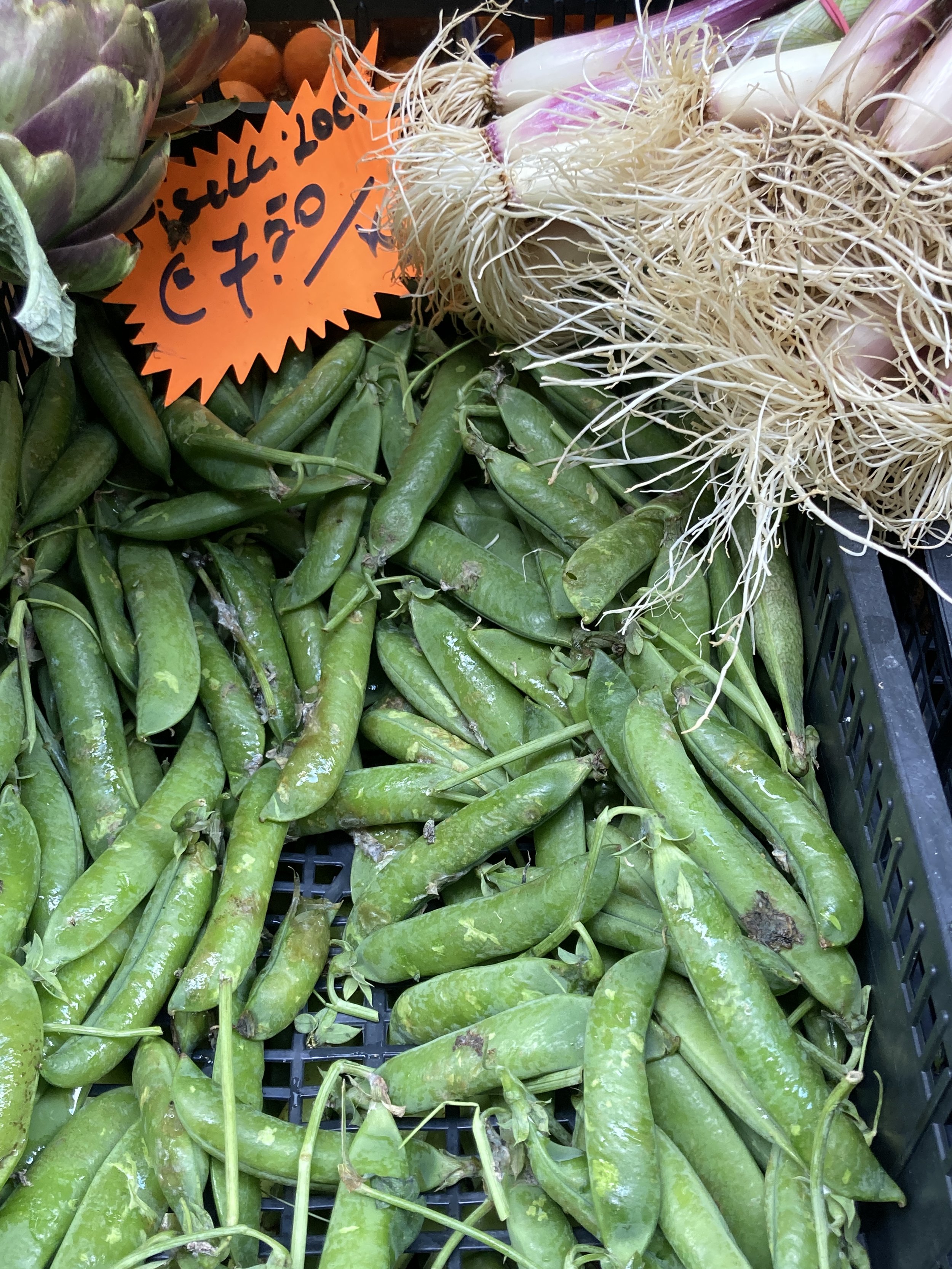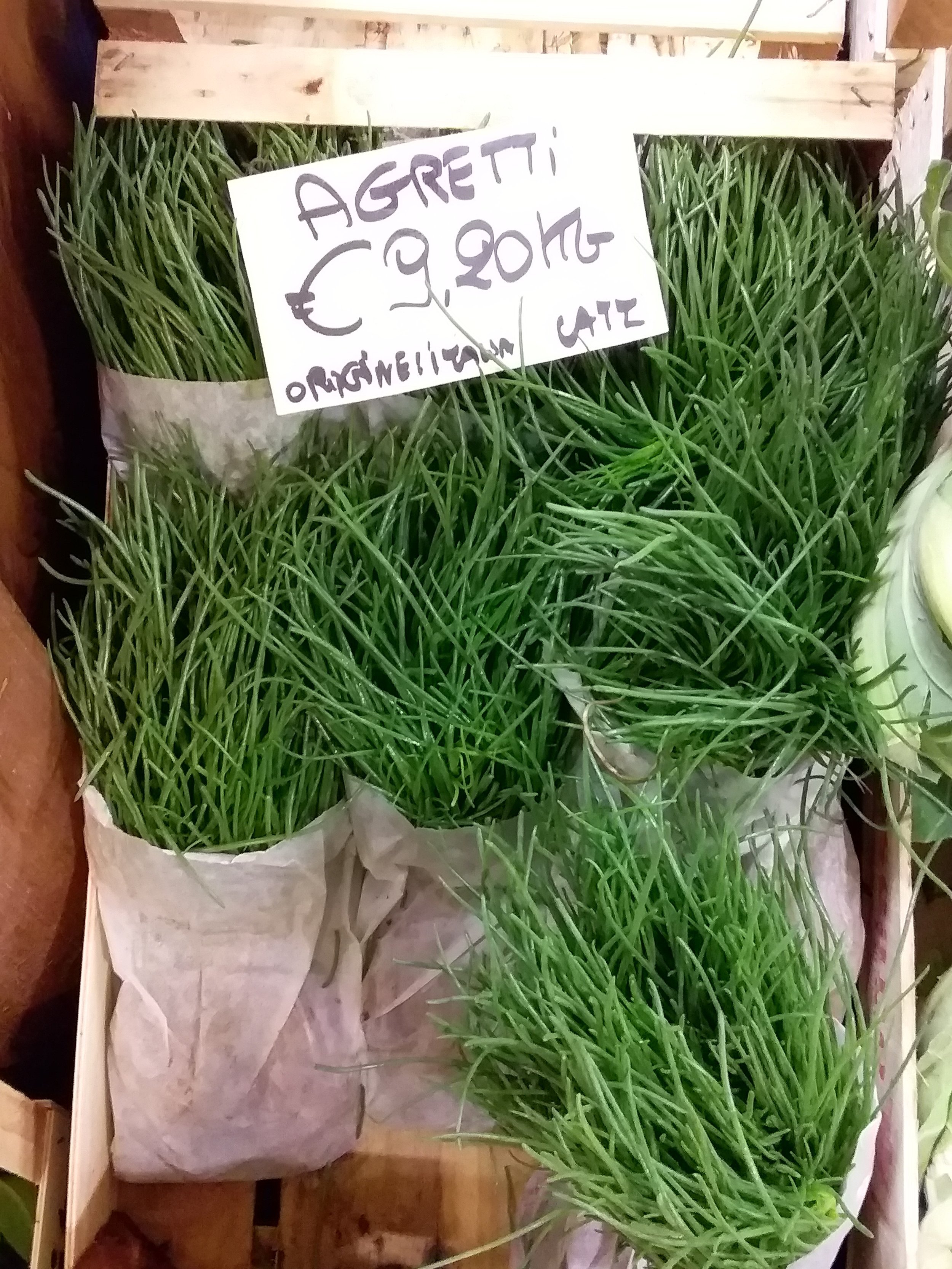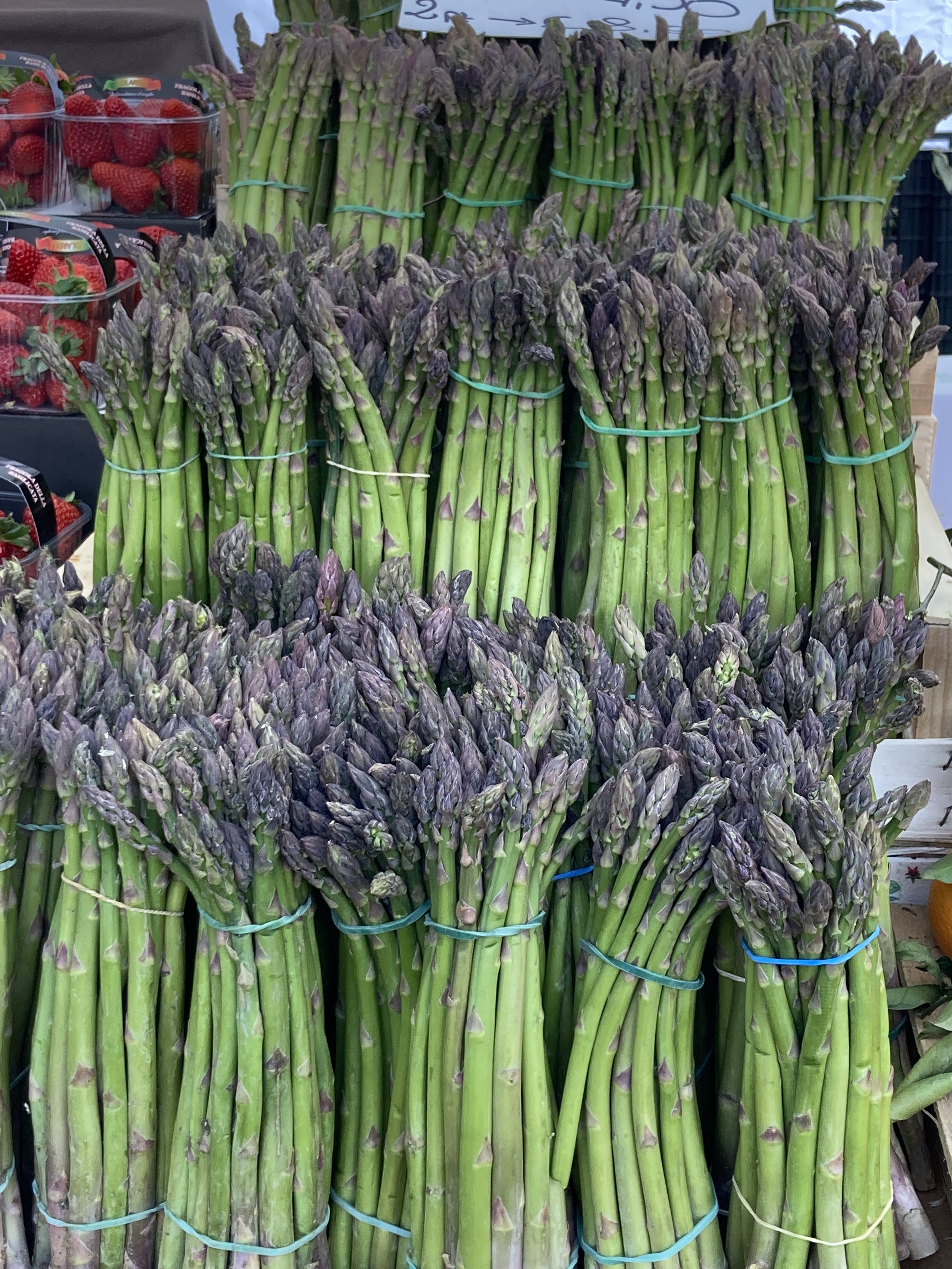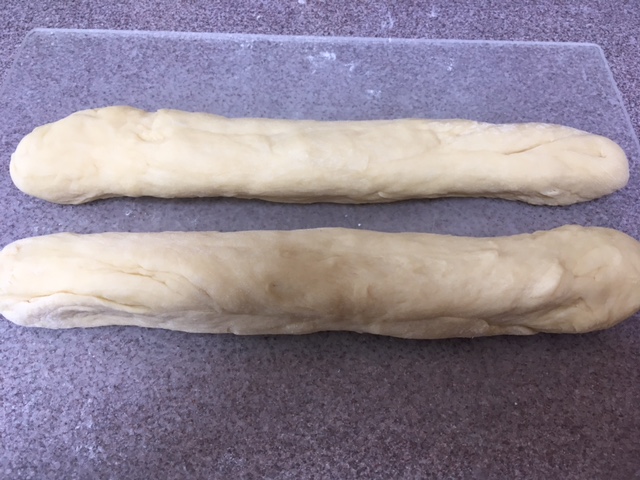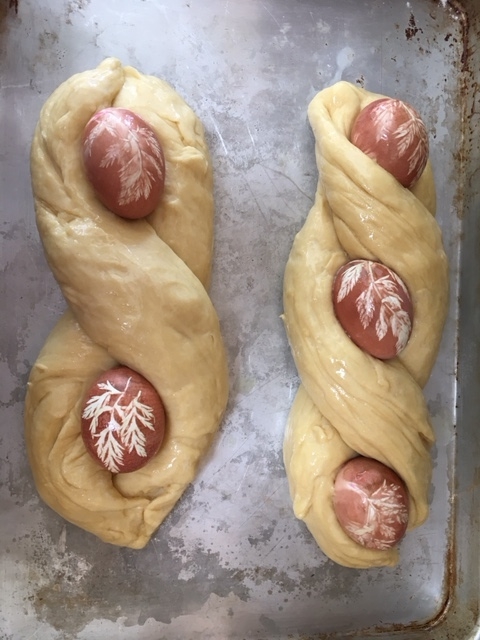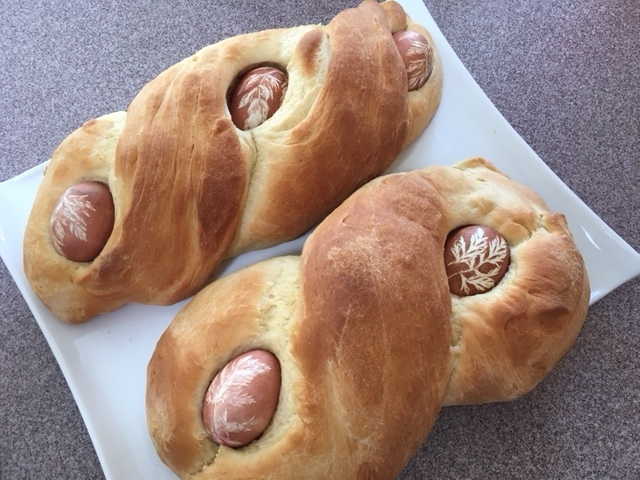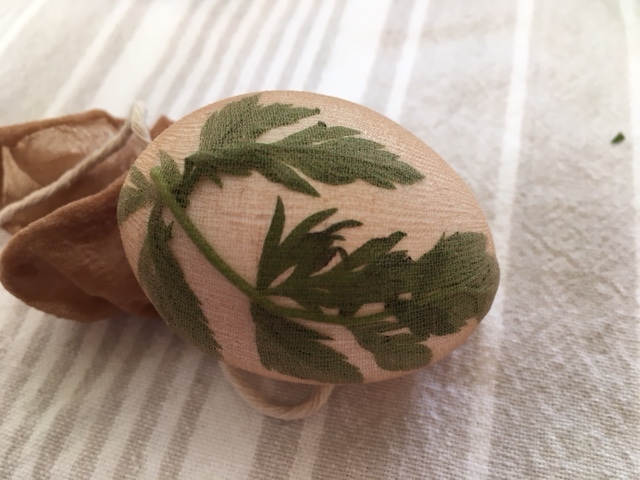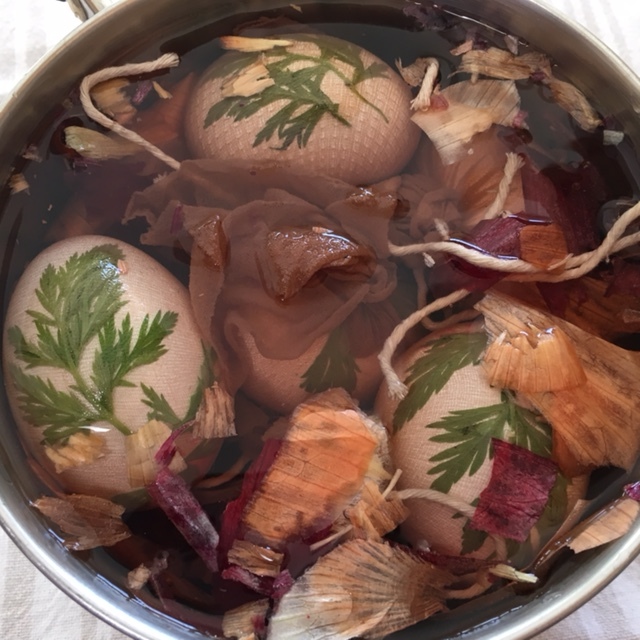It’s Beginning To Look A lot Like Easter
This unique Easter Rabbit sits outside of an Art Shop in Lucca.
Easter week weather in Italy can be hard to predict. It can be warm, sunny, and springlike, especially when the holiday falls later in April. Or it can be dark and stormy. I can recall times when my day-before-Easter grocery shopping took place in a torrential downpour and others when the spring-like temperatures and sunny skies made shopping for my Easter brunch a delight.
With Easter coming early this year, at the end of March, it is no surprise that the weeks leading up to the holiday were cloudy, rainy, and cool. It just wasn’t feeling like spring.
But, with a few days to go before Easter, all of a sudden the weather has been teasing spring. Temperatures have been mild and a gentle breeze has made the tall flowers along the wall sway (and made allergies flare up too), a sure sign that Easter, and Spring, are just around the corner.
Chocolate chickens are a typical Easter treat in Lucca.
Shops and windows throughout Lucca are dressed up for Easter and full of colorful goodies.
There are huge brightly wrapped Easter eggs, chocolate chickens and bunnies, and traditional Colomba (dove shaped) sweet breads on display. Each window is different, making it fun to walk around the historic center of town and window shop. I’ve picked up some small dark chocolate Easter chickens to serve as table decorations for an Easter morning brunch.
Also on display are beautiful ceramic dishware and decorations with Easter and Spring themes.
And while not really an Easter decoration, I find the fresh green produce that shows up at this time of year – piselli (peas), carciofi (artichoke), agretti (saltwort or Monk’s beard), and asparagi (asparagus) - to be just as wonderful as the sweet Easter goodies.
I am looking forward to all the Pasqua (Easter) events in Lucca, especially the moving and historic Good Friday procession. Easter Day will also bring the change to daylight savings time here (a bit later than in the US). Those longer daylight hours, along with mild April days, will be much appreciated after a rainy March.
Buona Pasqua !
